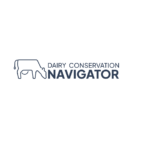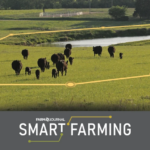Welcome to Newtrient’s Resources Library
Use this library to find webinars, peer reviewed articles, white papers, links to relevant websites and more.
A recent study from Cornell University found that emission intensities of New York dairies were among the lowest per gallon of milk both nationally and continentally. Key factors driving these lower emissions are the widespread use of manure over commercial fertilizers and the expansive production of high-quality, homegrown feed.
The Dairy Conservation Navigator is an online platform that consolidates science-based information about dairy conservation topics and the practices and technologies that reduce a farm’s environmental footprint. Created by the U.S. Dairy Checkoff, the platform simplifies complex sustainability topics by sharing educational materials and technical insights.
Published by Drovers, this article briefly provides insight on the available virtual fencing options by comparing the advantages and drawbacks of each.
Hear directly from the research team and industry experts as they share valuable insights from the N2 Applied nitrogen fixation technology with plasma injection at CoBar Dairy, covering the implementation, operation, and maintenance of the system.
This video explores Newtrient’s CIG evaluation of a vermifiltration technology, showcasing how these systems can effectively minimize the environmental impact of dairy manure, particularly regarding water quality.
This video explores Newtrient’s CIG evaluation of an ultrafiltration with reverse osmosis system, showcasing how these systems can effectively minimize the environmental impact of dairy manure, particularly regarding water quality.
This video explores Newtrient’s CIG evaluation of an in-vessel composting system—commonly referred to as drum composting— showcasing how these systems can effectively minimize the environmental impact of dairy manure, particularly regarding water quality.
The Dairy Soil & Water Regeneration (DSWR) Progress Update provides project insights and preliminary findings on the six-year project assessing how farming practices affect soil health, greenhouse gases and water quality in dairy feed production.
A webinar series on dairy sustainability and technology evaluations: This second webinar in the series is focused on the results of manure separation technology, most specifically a decanter centrifuge.
Due to its existing environmental and economic benefits, dairy farmers often turn to anaerobic digestion to mitigate greenhouse gas (GHG) emissions from manure. A study by Greene et al. quantifies the GHG reduction potential of the implementation of anaerobic digesters on large-scale U.S. dairy farms.










